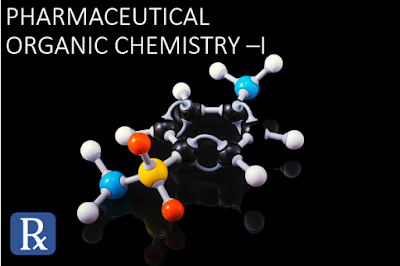UNIT-I
Classification, nomenclature and isomerism
UNIT-II
- SP3 hybridization in alkanes,
- Halogenation of alkanes, uses of paraffins.
- Stabilities of alkenes,
- SP2 hybridization in alkenes
E1 and E2 reactions – kinetics, order of reactivity of alkyl halides, rearrangement of
carbocations, Saytzeffs orientation and evidences. E1 verses E2 reactions, Factors affecting E1
and E2 reactions. Ozonolysis, electrophilic addition reactions of alkenes, Markownikoff’s
orientation, free radical addition reactions of alkenes, Anti Markownikoff’s orientation.
Stability of conjugated dienes, Diel-Alder, electrophilic addition, free radical addition
reactions of conjugated dienes, allylic rearrangement
UNIT-III
Alkyl halides*
SN1 and SN2 reactions - kinetics, order of reactivity of alkyl halides, stereochemistry and
rearrangement of carbocations.
SN1 versus SN2 reactions, Factors affecting SN1 and SN2 reactions
Structure and uses of ethylchloride, Chloroform, trichloroethylene, tetrachloroethylene, dichloromethane, tetrachloromethane and iodoform.
Alcohols*- Qualitative tests, Structure and uses of Ethyl alcohol, Methyl alcohol,
chlorobutanol, Cetosteryl alcohol, Benzyl alcohol, Glycerol, Propylene glycol
UNIT-IV
Carbonyl compounds* (Aldehydes and ketones)
Nucleophilic addition, Electromeric effect, aldol condensation, Crossed Aldol condensation,
Cannizzaro reaction, Crossed Cannizzaro reaction, Benzoin condensation, Perkin
condensation, qualitative tests, Structure and uses of Formaldehyde, Paraldehyde, Acetone,
Chloral hydrate, Hexamine, Benzaldehyde, Vanilin, Cinnamaldehyde.
UNIT-V
Carboxylic acids*
Acidity of carboxylic acids, effect of substituents on acidity, inductive effect and qualitative
tests for carboxylic acids ,amide and ester
Structure and Uses of Acetic acid, Lactic acid, Tartaric acid, Citric acid, Succinic acid. Oxalic
acid, Salicylic acid, Benzoic acid, Benzyl benzoate, Dimethyl phthalate, Methyl salicylate and
Acetyl salicylic acid
Aliphatic amines* - Basicity, effect of substituent on Basicity. Qualitative test, Structure and
uses of Ethanolamine, Ethylenediamine, Amphetamine
Practical
1. Systematic qualitative analysis of unknown organic compounds like
1. Preliminary test: Color, odour, aliphatic/aromatic compounds, saturation
and unsaturation, etc.
2. Detection of elements like Nitrogen, Sulphur and Halogen by
Lassaigne’s test
3. Solubility test
4. Functional group test like Phenols, Amides/ Urea, Carbohydrates,
Amines, Carboxylic acids, Aldehydes and Ketones, Alcohols, Esters,
Aromatic and Halogenated Hydrocarbons, Nitro compounds and
Anilides.
5. Melting point/Boiling point of organic compounds
6. Identification of the unknown compound from the literature using
melting point/ boiling point.
7. Preparation of the derivatives and confirmation of the unknown
compound by melting point/ boiling point.
8. Minimum 5 unknown organic compounds to be analysed systematically.
2. Preparation of suitable solid derivatives from organic compounds
3. Construction of molecular models
Recommended Books (Latest Editions)
1. Organic Chemistry by Morrison and Boyd
2. Organic Chemistry by I.L. Finar , Volume-I
3. Textbook of Organic Chemistry by B.S. Bahl & Arun Bahl.
4. Organic Chemistry by P.L.Soni
5. Practical Organic Chemistry by Mann and Saunders.
6. Vogel’s text book of Practical Organic Chemistry
7. Advanced Practical organic chemistry by N.K.Vishnoi.
8. Introduction to Organic Laboratory techniques by Pavia, Lampman and Kriz.
9. Reaction and reaction mechanism by Ahluwaliah/Chatwal.







1 Comments
Where is alcohol part notes
ReplyDelete